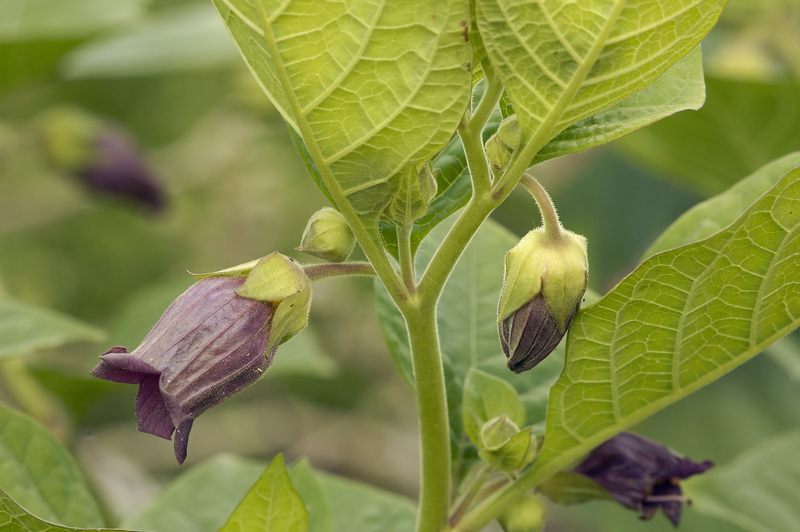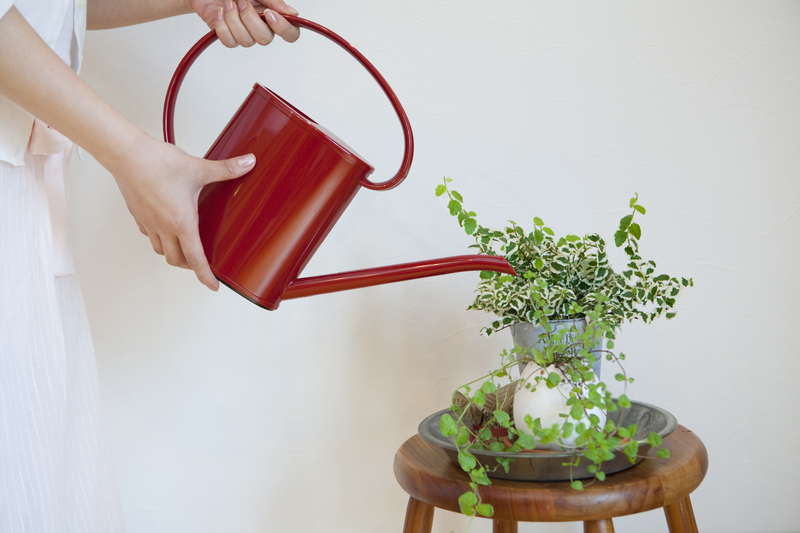Gardening Tips for the Dog-Loving Green Thumb
Posted on 27/05/2025
Gardening Tips for the Dog-Loving Green Thumb
Are you a passionate gardener and a dedicated dog owner? Combining these two joys can create a haven for both you and your furry friend, but it also comes with its own unique set of challenges. From dog-friendly gardening tips to creating safe, beautiful green spaces, this comprehensive guide provides everything you need to cultivate a flourishing garden that's as delightful for dogs as it is for people.

Why Dog Owners Need Special Gardening Tips
Dogs and gardens go together like sunshine and flowers--but only if you follow a few essential rules. Our beloved canine companions are naturally curious, playful, and sometimes a little mischievous. They dig, chew, trample, and sometimes treat the whole garden as their personal playground. So, incorporating dog-friendly gardening practices isn't just helpful, it's crucial to maintain harmony between your pets and plants.
- Safety: Some plants and fertilizers are toxic to dogs.
- Durability: Dog activity can damage delicate plants and lawn areas.
- Harmony: Blending your dog's needs with your gardening ambitions creates a peaceful outdoor environment.
Planning Your Garden with Dogs in Mind
1. Assess Your Space
Every successful garden starts with careful planning. Consider the size, shape, and use of your garden space. Map out existing pathways, shady areas, sun pockets, and natural boundaries such as fences or hedges.
- Allocate a digging spot: Dogs love to dig, so designate a special patch just for them and fill it with soft, loose soil.
- Pathways: Dogs often patrol the same routes, so install clear paths using durable materials (like flagstone, pea gravel, or mulch) to minimize wear and tear on your lawn.
- Secure fencing: Ensure your fences are high and secure to keep your pup safe within your yard.
2. Select Dog-Safe Plants
A dog-friendly garden begins with the right plant choices. Several common garden plants are toxic to dogs, so always double-check before planting anything new. Here is a list of non-toxic favorites:
- Sunflowers
- Snapdragons
- Rosemary
- Marigolds
- Basil
- Fuchsias
- Camellias
Avoid! The following popular plants are toxic to dogs and should be excluded from your garden:
- Azaleas
- Lilies
- Foxglove
- Oleander
- Sago Palm
- Hydrangea
For a comprehensive list of pet-safe plants, refer to the ASPCA's Safe Plant Database.
3. Pet-Friendly Landscaping Materials
Not all mulch, stones, or soil amendments are safe for dogs. For a dog-safe gardening environment, choose materials carefully:
- Mulch: Avoid cocoa mulch, as it's toxic to dogs. Use pine, cedar, or untreated wood chips instead.
- Pebbles and stones: Opt for smooth, rounded stones rather than sharp-edged gravel.
- Non-toxic fertilizers: Choose organic options and always store chemicals out of reach.
Training and Boundaries in the Garden
1. Train Your Dog to Respect the Garden
A little training goes a long way toward transforming your garden into a pup-friendly paradise. Teaching simple commands like "leave it" or "stay" can prevent unwanted digging or plant destruction. Use positive reinforcement techniques and plenty of treats and praise.
2. Create Zones and Barriers
Strategically placed barriers can give delicate plants protection from enthusiastic paws. Here are some effective ideas:
- Raised beds: Keep flower or vegetable patches safe by elevating them beyond your dog's reach.
- Decorative fencing: Low fences or edging can signal "off limits" zones.
- Natural barriers: Use dense shrubs or thornless berry bushes as visual and physical boundaries.
3. Designate a Play Area
Dogs need space to romp and relax. Allocate a section of your yard just for them, stocked with their favorite toys, a shady spot for naps, and maybe even a kiddie pool for hot days. This helps reduce the temptation to invade your prized flower beds.
Maintaining a Garden with a Canine Companion
1. Manage Digging and Scratching Behavior
Digging is a natural dog behavior, but it can wreak havoc on gardens. If you notice problem spots:
- Provide a digging area: Bury toys or treats to encourage your pooch to dig where it's allowed.
- Deterrents: Use natural deterrents like citrus peels or chile powder around no-go zones.
- Regular play: Ensure your dog gets plenty of exercise in and outside the garden to curb boredom digging.
2. Dealing with Urine Burns and Damage
Dog urine can cause unsightly yellow spots on your lawn due to its high nitrogen content. Here are a few dog lover gardening tips for preventing and repairing damage:
- Rinse: If you see your dog urinate on the grass, quickly dilute the area with water.
- Tough grass species: Plant more resilient grasses like rye or fescue.
- Dog potty area: Train your pup to use a gravel or mulched spot for their bathroom breaks.
3. Regular Maintenance Is Key
Keep an eye on play areas for holes, weak spots in fences, or chewed features. Walk your garden each week to spot early signs of plant damage or developing hazards, such as exposed irrigation pipes.
- Replace damaged mulch or plants
- Spray clean hard surfaces regularly to reduce urine odors
- Keep water bowls topped up
DIY Projects: Enrichment for Dogs and Gardeners
1. Build a Dog Run
If your yard space allows, a dog run provides a secure place to play without threatening your garden beds. Use grass, artificial turf, or mulch for flooring, and add toys, tunnels, or ramps for extra fun.
2. Install Shade Features
Dogs can easily overheat, especially in summer. Plant trees, build a pergola, or install a shade sail to create cool, comfortable shelter for your pet and lush, shaded greenery.
3. Water Features for Dogs
A shallow fountain or splash pool encourages healthy hydration and play, especially on warm days. Ensure that water features are shallow, easy to clean, and out of reach of electrical wiring.
Eco-Friendly and Organic Gardening for Dog Owners
A dog-friendly green thumb is often an environmentally conscious one, too. Organic gardening methods ensure your garden is safe for everyone--two-legged and four-legged alike. Here's how to garden organically with dogs in mind:
- Compost: Use natural compost instead of chemical fertilizers.
- Pest control: Non-toxic solutions like neem oil, insecticidal soaps, or introducing beneficial insects protect your plants and pets.
- Herbicides: Pull weeds by hand or apply mulch for suppression, rather than relying on chemical weed killers.
Preventing Common Hazards for Your Dog in the Garden
- Mushrooms: Wild fungi can be highly toxic. Remove any mushrooms as soon as they appear.
- Garden tools: Store sharp tools and hoses safely after use to prevent injury.
- Ponds/pools: Supervise access to deep water. Consider fencing or dog-proof covers.
- Bugs and insects: Bees, wasps, and spiders sometimes pose a risk. Regular inspections help identify and address potential issues early.
Inspirational Ideas: Get Creative with Dog-Friendly Gardening
1. Sensory Gardens
Create a space filled with aromatic herbs and textured paths (think lavender, thyme, mint, or chamomile) to engage your dog's incredible sense of smell. These plants are an enjoyable, safe enrichment for your pet and delightful for your own senses.
2. Themed Play Zones
Break up your yard into themed areas--such as a "digging den" filled with sand, a "treat trail" where you hide toys or snacks, or a "doggy lounging deck" with comfortable beds or mats under shade.
3. Artistic Garden Features
Incorporate whimsical statues, handmade stepping stones (with paw prints, perhaps!), or colorful dog-safe plants in raised beds to add personality to your landscape.

FAQ: Gardening with Dogs
- Q: Can mulch harm my dog?
A: Cocoa mulch is dangerous for dogs, but pine, cedar, or untreated wood chips are safe alternatives. - Q: What are signs of plant poisoning in dogs?
A: Look for vomiting, drooling, lethargy, or unusual behavior. If you suspect poisoning, contact your vet immediately. - Q: How do I stop my dog from eating plants?
A: Train with positive reinforcement, provide plenty of chew toys, and use natural deterrents like citrus or safe bitter sprays.
Conclusion: Cultivating Harmony for the Dog-Loving Green Thumb
Gardening tips for the dog-loving green thumb go beyond aesthetics--they're about creating a truly joyful and safe space for the entire family. With the right dog-friendly garden designs, plant choices, and a little training, you and your faithful companion can both thrive outdoors. Whether you're planting, pruning, or playing fetch among the marigolds, your efforts will bloom into a healthier, happier, and more sustainable backyard oasis. Happy gardening!

